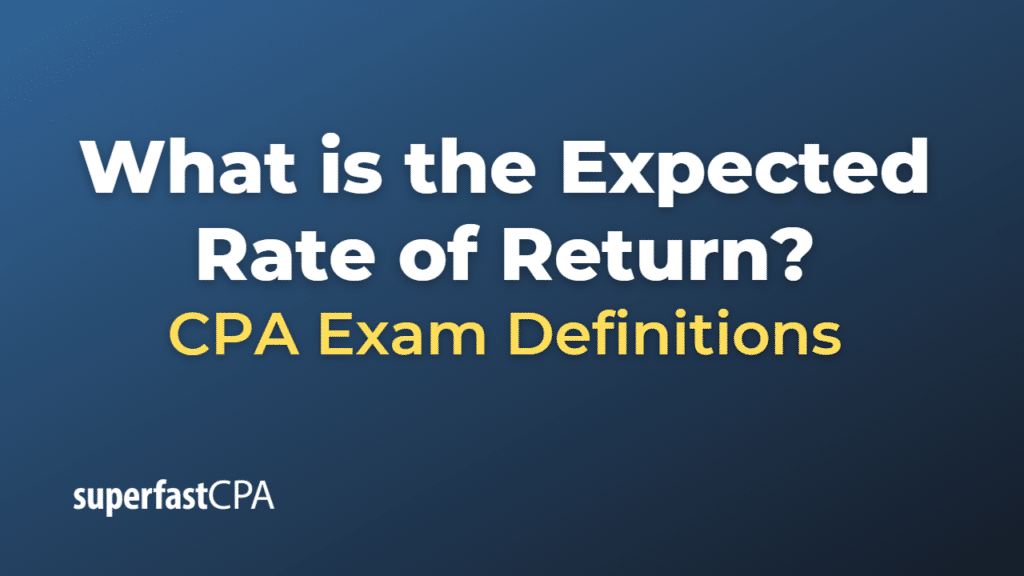Expected Rate of Return
The expected rate of return is a forecasted return on an investment, estimated based on historical data or analyst estimates. It represents the average amount of money gained or lost on an investment each year, expressed as a percentage of the investment’s total cost.
The expected rate of return is a key concept in financial planning, investing, and risk management, as it helps investors predict their potential earnings and assess the attractiveness of different investments.
To calculate the expected rate of return, you need to know the potential outcomes of the investment, their probabilities, and then take the sum of these expected results.
Mathematically, it’s represented as:
\(ERR = \sum (R_i \times P_i) \)
Where:
- ERR is the Expected Rate of Return.
- Ri is the return of the i-th outcome or scenario.
- Pi is the probability of the i-th outcome or scenario occurring.
- The summation runs over all possible outcomes.
For example, if an investment has a 50% chance of yielding a 10% return and a 50% chance of yielding a 20% return, the expected return would be (0.5 * 10%) + (0.5 * 20%) = 15%.
It’s important to note that the expected rate of return is a statistical expectation based on probable outcomes; it’s not a guaranteed return. The actual return on an investment may be higher or lower.
Example of the Expected Rate of Return
Let’s consider a simple investment scenario.
Suppose you’re considering investing in a mutual fund. The fund manager provides the following potential return scenarios for the next year based on the fund’s historical performance:
- There’s a 20% chance the fund will return -5% (i.e., a loss).
- There’s a 30% chance the fund will return 5%.
- There’s a 50% chance the fund will return 15%.
The expected rate of return can be calculated by multiplying each potential return by its probability, then adding up these values:
- (-5% * 20%) = -1%
- (5% * 30%) = 1.5%
- (15% * 50%) = 7.5%
The expected rate of return is therefore -1% + 1.5% + 7.5% = 8%.
This suggests that, based on historical performance and the fund manager’s assessment, you can expect an average return of 8% from this mutual fund in the next year. However, remember that the actual return could be higher or lower than this, as the expected rate of return is only an estimate and does not guarantee a specific outcome.













